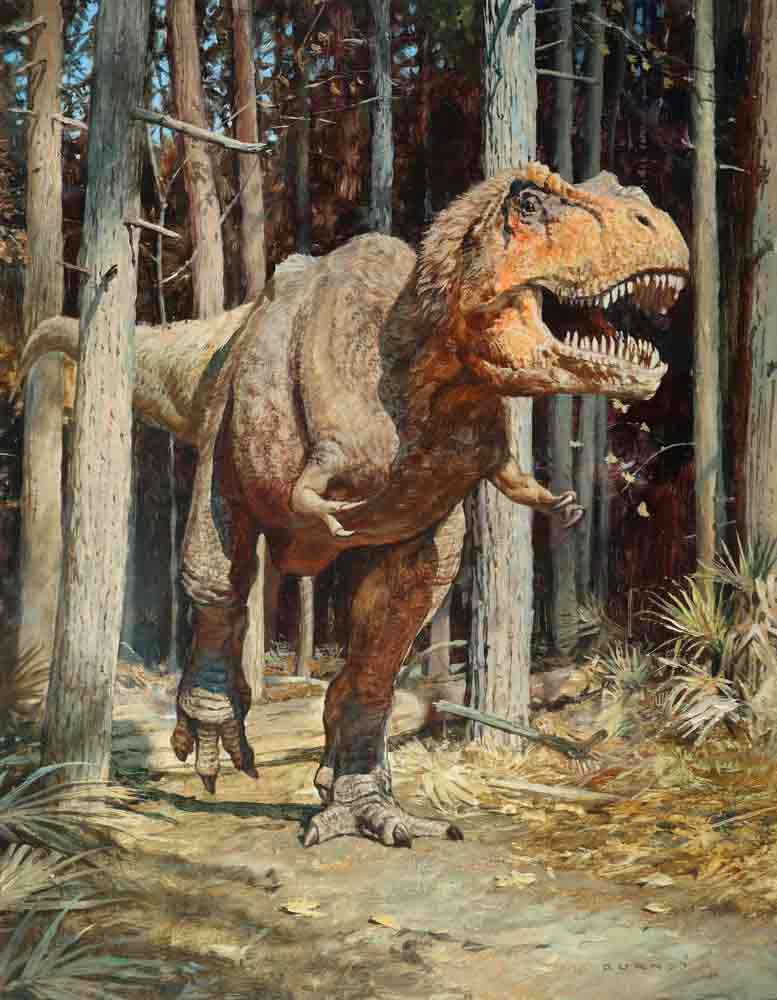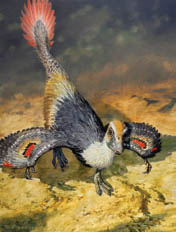In the Audubon Tradition Exhibition

About James Gurney

James Gurney is the artist and author best known for his illustrated book series Dinotopia. He specializes in painting realistic images of scenes that can’t be photographed, from dinosaurs to ancient civilizations. He is also a dedicated
Born in California in 1958, the son of a mechanical engineer, he taught himself to draw by reading books about the illustrators Norman Rockwell and Howard Pyle. He studied archaeology at the University of California at Berkeley, receiving a degree in anthropology with Phi Beta Kappa honors. Prompted by a cross-country adventure on freight trains, he coauthored The Artist’s Guide to Sketching in 1982. During the same period, he worked as a background painter for the animated film Fire and Ice, co-produced by Ralph Bakshi and Frank Frazetta.
T. Rex in Forest
$9500
Oil on Panel
14 x 18 x 1
An adult Tyrannosaurus rex steps out of a mixed conifer forest into the sunlight. I painted this under the supervision of paleontologist Stephen Brusatte and it was published in 2019 by the National Wildlife Federation in an article called “The Real T. Rex” I referenced various scale maquettes set up in actual sunlight, and based the forest on
How to Purchase
T. Rex Family Bathing
$9500
Oil on Panel
14 x 18 x 1
In a shallow stretch of a freshwater stream, an adult Tyrannosaurus rex introduces three juveniles to the water and supervises them while they bathe. I develop the scenario after observing the bathing behaviors of ostriches, emus, and cassowaries, plus a lot of kinds of birds. The juveniles still have their light coloration and haven’t yet molted into their adult layers of feathers.
The feathers are based on the fact that all members of the tyrannosaur group which
How to Purchase
Khaan Displaying
$5500 Sold
Oil on Panel
14 x 18 x 1
There is now ample fossil evidence that small theropod dinosaurs had extensive feather covering, and in some cases, winglike structures on the arms, even though these dinosaurs could not fly. So what were the feathers for, and what did they look like? I portray a small oviraptorid dinosaur, Khaan mckennai in a courtship display, used either to attract mates or intimidate rivals, much like the behavior of many modern birds. I made this painting recently for the National Wildlife Federation, which published it in an article about dinosaurs with feathers



